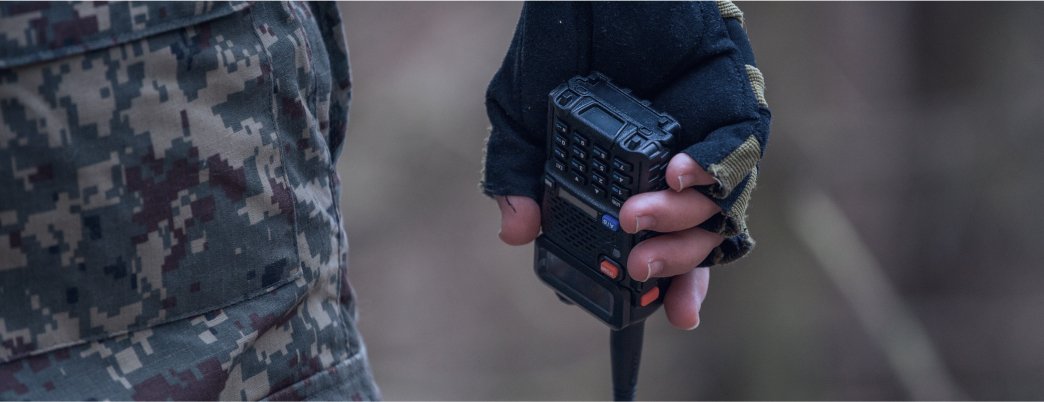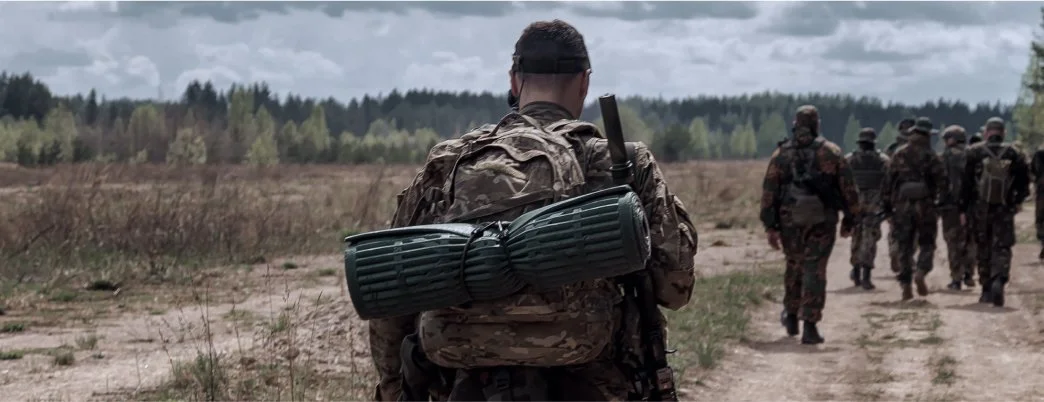
Military Communications Management
Helping the Australian Army create, manage, and monitor a sovereign software defined communications network in a tactical environment .
/ RESEARCH / INFORMATION ARCHITECTURE / UX DESIGN / UI DESIGN / DELIVERY
↓
The Military Communications Network Management system was a technical demonstration presented to the Australian Defence Force as part of the C4 EDGE Program.
The main focus of the program was to demonstrate that a National approach to Australian Sovereign Communications (via a distributed Software Defined Battlefield Communications Network Architecture) can be achieved through a team of Australian businesses working together.
Fifty Zoo, in conjunction with a defence industry systems integrator, were engaged to research and design the User Interface for the system.
Working with members of C4 Edge, we undertook research to understand how Signals officers plan, prepare and execute tactical operations - and designed an interface to create, manage and monitor a comms network in a tactical environment.
SECTOR
Defence
TIMEFRAME
12+ months
STATUS
Ongoing Development
Our
approach
Fifty Zoo’s Experience Definition™ approach is specifically engineered to help design a solution that aligns with the organisation’s operating model, solves key challenges, and delivers services that customers want to use - not just need to use.
Align
Working closely with our customer, we began by aligning on the scope and building a shared understanding of the challenge space, goals that must be achieved by the project, existing processes and dependencies, and ultimately what success looks like.
Key activities:
-
Project Kickoff
-
Ethology Workshop
-
Goals Mapping
Key challenges
we identified
/ Australian Capability
There is a perception that Australian Industry isn’t a high enough standard and there is a delta between Australian and Foreign Suppliers. This has led to a lack of competition in Australian Defence Industry.
/ Existing Procurement
There is a Defence mindset of procuring tech that is cutting edge however not compatible with Army requirements.
/ Australian Capacity
There is a perception that Australian Industry cannot supply large scale orders to Defence and that there is a reliance on foreign supply chain incompatible with Commonwealth standards.
/ Foreign Pressures
There is a mindset that working with Tier 1 Defence contractors who can supply end to end solutions is easier. Which pushes small Industry players to rely upon a foreign prime.
Discover
Next, we worked with members of the ADF, members of industry and experienced communications experts. We needed to understand the context in which Signals Officers operate in, the challenges they face, as well as the systems, processes and procedures they work with. This would allow us to design an experience that meets the user needs.
Our discussions with the customer allowed us to create an Experience Map of the key user tasks and opportunities for the system to better support the communications planning and execution in a tactical operation environment.
Key activities:
-
Stakeholder Interviews
-
User Research
-
Comparative Reviews
-
Journey Mapping
What we
learned
/ Developing a communications plan in a traditional sense for an Operation has become increasingly complex as the number of radio types have increased (and therefore a more crowded network) - requiring Signals Officers to be more technically savvy. The system needs to make it easier to set up a SDN across multiple radios and nodes and efficiently.
/ During the course of an Operation there can be constant challenges of knowing where unit members are at all times due to multiple reconfiguration of mobile HQs. Older equipment have inherent connectivity problems. The system needs to be able to visualise and monitor node movements and connectivity status at all times.
/ Current experience of redeploying of troops mid operation can be cumbersome with loss in communication whilst a suitable HQ site is being located and set up. The system needs to be able to simulate and suggest HQ sites that offer best comms advantage mid operation during strategic changes.
/ Sharing of sensitive intelligence with the right personnel at the right time about possible enemy activity during an operation has been traditionally challenging. The system could be used to help triangulate potential enemy activity that could be made visible to the right personnel
Who we need
to design for
/ Signals Officers (S6) at HQ
Prior to any Operation or Mission, Signals Officers at HQ need to be able to plan, create and configure the communications network(s) based on the mission brief as well as an assessment of the environment around the Area of Operation (AO). Once an Operation is underway, they would continually monitor the communications activities and respond to any issues or tactical or strategic changes
/ Signals Officers at the Front Line
During an Operation or Mission, the Signals Officers at the Frontline would be responsible for maintaining and monitoring the communications activities of their respective unit on the ground. They would also need to conduct comms activities affecting their unit in response to any tactical or strategic changes affecting the Operation.
/ Combatants at the Front Line
Combatants at the Front Line need to be able to receive communications affecting them and their unit and respond to any tactical or strategic changes required. As such, they would need to be able to quickly and effectively monitor their own communications status in order to ensure that they are able to communicate or be in contact at critical moments.
Define
With the insights gained from the Discover phase and understanding the user context as well as the technical constraints, we proceeded to define the user experience and what the solution looks like for the end users. We took an iterative approach that allowed us to incorporate ideation workshops and check-ins with key stakeholders as well as develop a working proof of concept that allowed users to plan, create and manage tactical communications.
Key activities:
-
Information Architecture
-
Ideation
-
UX Design
-
Brand Concepting
-
UI Design
-
User Testing
-
Design System
User Interface Design
↓ Continue reading
-
Digital Systems Integration Laboratory
Secure sovereign defence Systems Integration Lab.












